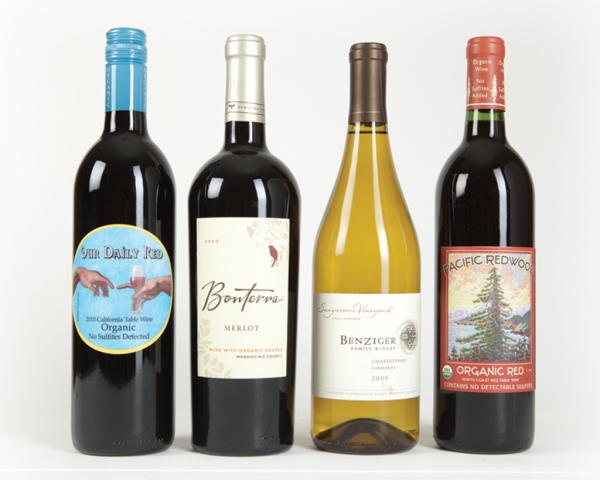Daily Dish the Sonoma Market blog

What Exactly Is an Organic Wine?
Please note that this is an older article. Any products or services pictured or described may have changed or may no longer be available. Thank you for visiting!
A lot has been said recently about the rise of organic wines, but quite a bit of confusion remains about what makes a wine “organic.” In fact, there are four separate types of these wines: organic wines, wines made from organically grown grapes, biodynamic wines and wines with no sulfites added.
A lot has been said recently about the rise of organic wines, but quite a bit of confusion remains about what makes a wine “organic.” In fact, there are four separate types of these wines: organic wines, wines made from organically grown grapes, biodynamic wines and wines with no sulfites added.
• Organic wines: These wines carry the United States Department of Agriculture (USDA) organic seal, indicating the wine is made from 100 percent organically grown ingredients and has been monitored throughout its entire production process. Just like any organic fruit, these wines have no pesticides, herbicides, fungicides, chemical fertilizers or synthetic chemicals of any kind. The wine can contain only naturally occurring sulfites. Some say “no detectible sulfites” on the label, which means the current testing methods cannot detect any sulfites. Example: Our Daily Red Wine
• Wines made with organically grown grapes: This means the wine is made from at least 70 percent organically grown grapes. It may have artificial sulfites added, and it does not carry the USDA organic seal. Example: Bonterra Wines
• Biodynamic wines: Based on the precise observation and an attempt at balance of nature, a concept originated by the early 20th-century Austrian philosopher Rudolf Steiner. Biodynamic wine is 100 percent organic, and in addition, the grower has gone beyond to try to bring the farming process more closely in tune with nature. They view vineyards as self-sustaining ecosystems and the soil beneath them as a living organism. Sulfites may be used, but in very low amounts. Example: Benziger Wines
• The role of sulfites: Sulfites occur naturally in wine during the fermentation process, just as they occur naturally in your body and many foods. In wine production, the addition of sulfites acts as a preservative used to prevent oxidation and bacterial spoilage, stabilizing the wine. A wine made with no sulfites will be more fragile and age sooner. White wines are the most fragile as they do not have tannins, a component in red wines that helps preserve them. There is a very small percentage (less than .5 percent) of the population, especially asthmatics, that is sensitive to excess sulfites. Any wine with more than 10 parts per million is required to state “contains sulfites” on the label. Example: Pacific Redwood
• Hank Beal (Adult Beverages)